With NSO preceptorials, a chance to be curious
On Saturday, Aug. 24, first-year undergraduates have an opportunity to choose from dozens of topical seminars that range from an introduction to the Penn Band to a discussion at Perry World House about global citizenship. The preceptorials run from 10 a.m. to 2 p.m. and are part of New Student Orientation, which spans Aug. 21-26.
“Preceptorials provide exposure to people that students might not otherwise get a chance to meet,” says David Fox, director of NSO. “The idea is to spend a couple hours doing something that might interest you.”
Preceptorials have been part of NSO for at least two decades, Fox says. They are led by a mix of faculty, staff, and student groups who volunteer their time. He emphasizes that it’s sometimes an opportunity for students to interact with a faculty member for the first time in an extended manner. Some students, Fox says, will use the opportunity to continue thinking about how to map out their academic careers and hear from others who’ve been in their shoes.
Ann Kuttner, an associate professor of history of art in the School of Arts & Sciences, has been leading preceptorials since the 2010s, she says, and likes to use the time to show students the Penn Museum and ask them to think more critically about public space—particularly landscape architecture. This year, she’ll lead From Rome to Philadelphia at the Penn Museum, an approximately 90-minute preceptorial that highlights artifacts from the Penn Museum’s courtyard like the famous Roman Wanamaker bronzes. Students will also have a chance to explore the Mediterranean Galleries, and Kuttner will discuss the Roman concept of bringing culture to the masses and their ancient regard for public parks.
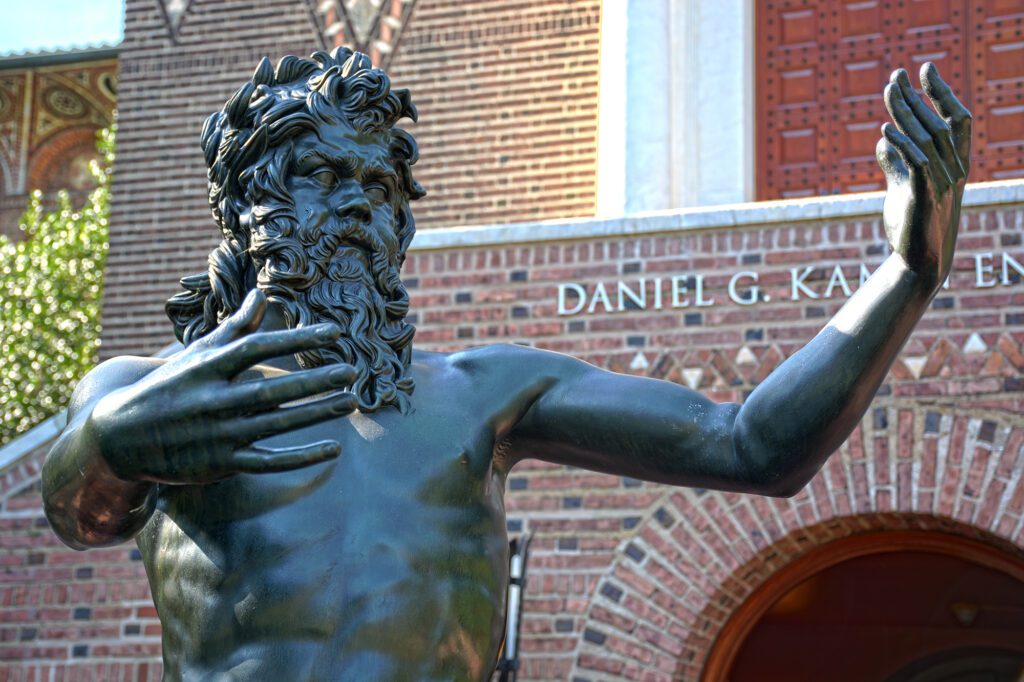
For many students, she says, it’s a first chance to reevaluate a museum space as “a place they’d go for pleasure and not just for duty.”
“I think these preceptorials are important, and one of the gorgeous things is it’s a very eccentric program,” Kuttner says. “It’s literally what faculty [and others] come up with. Maybe it happens once and never again, or maybe it comes back around … and then they have the chance to spend some time with a professor who is convinced they are a worthwhile and interesting person.”
It is, she says, a space for students to be curious, to ask questions, and—for faculty—an opportunity to create an idea-generating jump-off point. “I think ideally that’s what a preceptorial also does,” she says.
Malik Muhammad, meanwhile, is director of inclusion initiatives and social justice education at University Life and uses his preceptorial as a welcoming space to talk about belonging. We Belong: Fostering Authenticity at Penn and Beyond will be a 75-minute facilitated discussion for students who want to learn more about how to be their authentic selves on campus. They’ll also learn about Penn’s many cultural resources that are available—including himself.
“It’s all about embracing the full essence of who you are in a tough campus culture like Penn, being able to be your authentic self,” says Malik. “We’ll be talking about barriers to authenticity, opportunities around authenticity, sharing campus resources that are supporting various identities, and then also creating that level of confidence folks can have as they navigate their first-year experience.”
Part of that effort, he says, is to “mitigate that essence of imposter syndrome” as students begin their time at Penn.
Historically, says Jonathan Zimmerman, a professor of history of education in the Graduate School of Education, who referenced the work of Christopher Loss of Vanderbilt, preceptorials began as a larger effort in the 1920s to orient new students who were only just beginning to learn about what universities are. The boom decade meant that white men and some women, post-suffrage, were entering the university system in larger numbers. Because of this influx, universities realized the need to either acclimate students or risk losing them.
“What does it mean to have a roommate? What’s my meal plan going to look like? What should I major in? All these things,” says Zimmerman. “And this is the beginning of what we call ‘student life,’ of the whole advising system, and yes, it’s the beginning of the creation of a mental health system.”
Universities, he says, assumed a new responsibility of attending to students’ “well-being and psyches.” Much of universities’ administrative roles, including programs like New Student Orientation, have evolved from this seedling era.
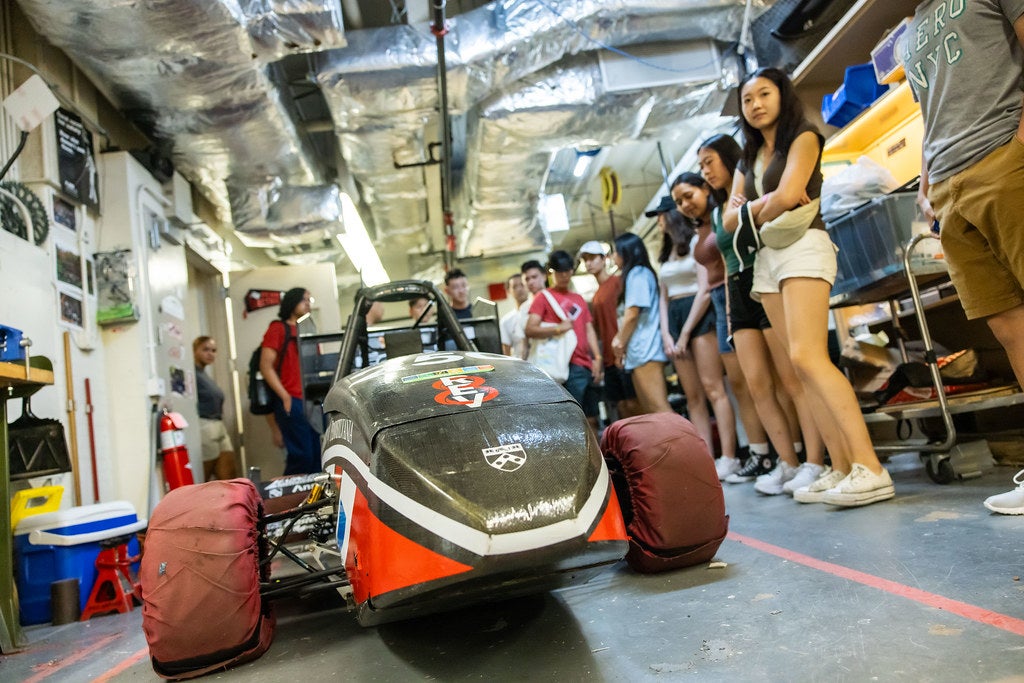
For this year’s preceptorials, adds Fox, he further asks that students take part in a walking tour on Sunday. Those take place from 11 a.m. to 2 p.m. on Aug. 25.
“We don’t label them as preceptorials, but in a way they are a variation,” he says.
They cover downtown neighborhoods like Chinatown and Rittenhouse Square, and he hopes first-years will take time to explore West Philadelphia and all it has to offer.
A Haven for Half a Century
Bolstered by philanthropy, the Penn Women’s Center is celebrating 50 years of community, education, and advocacy.
In the early 1970s, Penn was a university in transition.
The campus was expanding west beyond 38th street. Cultural movements in civil rights and feminist liberation resulted in the University’s first course in Black history and the launch of the Women’s Studies program in 1973. That same year, the Penn Women’s Center (PWC) was founded as a safe space for women on campus to promote gender equity.
“The Penn Women’s Center was being built as I graduated,” says Barbara Saidel, CW’73, G’77, WG’79. “What started off as a supportive and safe place for women at Penn has evolved to become an inclusive community for anybody who walks through their doors.”
Now celebrating its 50th anniversary, the PWC is one of the oldest women’s centers in the country. Led by director Elisa Foster and supported in part by philanthropy, the PWC team includes a compassionate group of staff and student coordinators who promote gender justice and aim to empower visitors. “The PWC has been at the forefront of the fight for women’s rights and gender justice since its inception,” says Foster.
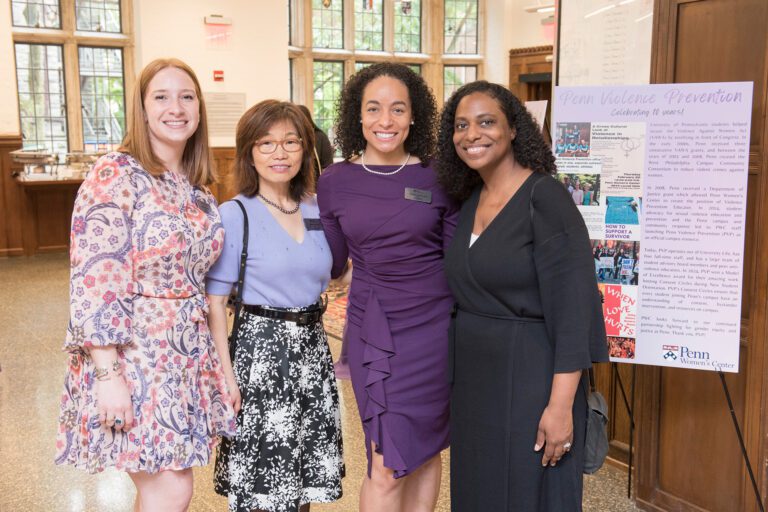
Recently, the Class of 1973 decided to support the Penn Women’s Center as part of their 50th reunion class gift. “In 2023, our class wanted to support an initiative that signified the changes that happened during our time on campus,” says Class President Bill Keller, C’73, PAR’23. “While meeting with the PWC leadership, we learned that additional funding could support more programs and events that took place in their beloved kitchen space. We were happy to make that happen.”
During a “Study Break” event in May, the Women’s Center was bustling with activity. Students made candles in the sustainable kitchen and noshed on homemade cookies, while others organized flower bouquets to bring home. “Events like this are a bit more light-hearted and a good distraction during reading days,” says Nicol Paulino, C’25, a student program assistant who is also a Penn Anti-Violence Educator and a Reach-A-Peer volunteer. In the back garden patio, still more students gathered to pet dogs and catch up. Beyond programming, the Center also serves students, staff, and faculty by offering confidential counseling; community spaces for studying, relaxation, and meetings; and a lactation room for nursing parents that includes a hospital-grade breast pump.
A Home on Campus
The Greenfield Intercultural Center celebrates 40 years of community building.
When College senior Timethius Terrell was losing motivation to continue his non-profit startup focused on intercultural allyship, he turned to the Albert M. Greenfield Intercultural Center (GIC) for help.
Not only did GIC director Valerie de Cruz CGS’02 and associate director Kia Lor GEd’16 provide guidance, but Terrell has also become one of the many regulars at the center, which for 40 years has been a haven for people of all ethnicities, backgrounds, and nationalities to come together and breathe after a hard day at Penn. He even interned at GIC during the summer of 2022.
“I still consider myself to be an active member of this community,” Terrell said this spring. “Maybe not as formally,” he allowed. “I think that’s what makes it special, though—you don’t have to be.”
The Greenfield Intercultural Center was established in 1984, six years after the United Minorities Council, a coalition of minority student organizations, signed a petition to have its own space on campus.
To mark its 40th anniversary, the GIC is holding events throughout the year, including a celebration in their building at 3708 Chestnut Street that took place on January 27—exactly 40 years after its founding. The celebration included musical performances, cake-cutting, and the presentation of awards to Penn alumni who were recognized for embodying the spirit of the GIC through work in their communities. One of the honorees, Angbeen Saleem C’12—a creative artist, writer, and poet who “spent all of my free time at the GIC” as a work-study student there—read two poems she had written for the event.
“A lot of these alumni come back and they bring their kids and they say hi to Val,” remarked College senior and GIC work-study student Oumy Diasse. “You could kind of just look around and see everyone’s super familial.”
In addition to providing a friendly space for students to meet casually and share meals, the GIC also sponsors events related to culture and race and has helped establish and nurture programs and organizations for minority groups including the Persian Student Society, the Turkish Student Organization, and Natives at Penn [“Native Pride,” Jul|Aug 2019], which marks its 30th anniversary this year. It also helped to launch Makuu: The Black Cultural Center, the Pan-Asian American Community House (PAACH), and La Casa Latina Center, all of which are currently based at the revamped ARCH building on Locust Walk [“Gazetteer,” Nov|Dec 2022]. In 2016, Penn’s First-Generation Low-Income Program (FGLI) opened in the GIC, which also started an alumni mentorship program for FGLI students called Penn FLASH.
The January 27 celebration brought many alums back. “A lot of the stuff I do now is connected to my time here,” said Sean Vereen GEd’00 GrEd’05, who was the associate director of the GIC from 2003 to 2006 and now runs the Philadelphia-based college and career-access program Steppingstone Scholars. De Cruz, who’s served as the GIC’s director for the last 27 years, is another reason alumni love to return. “[Valerie] has a real power to stay connected to people,” Vereen noted. “She makes them feel like individuals. And she has weathered all the changes on campus and been able to maintain [the GIC].”
“I think the most important thing I bring is the building of relationships,” said de Cruz.
For current work-study student and College sophomore Kaynath Chowdhury, “the GIC’s a home.” At the center she often finds herself washing dishes, taking out the trash, giving tours, helping with events, and greeting people at the door. It’s a far cry from office work, she says; it’s more like what she would do at her own family’s house.
The familial atmosphere seemed to make an impression on College freshman Theo Greenfield C’27, the great-grandson of prominent Philadelphia-based businessman Albert M. Greenfield, whose foundation supplied the grant to launch the GIC. An additional $1 million gift from the Albert M. Greenfield Foundation a decade ago helped to endow the GIC and increase staffing and expand its programs.
“There are people here who have dedicated their lives to not just the GIC but the mission of the GIC as an intercultural center,” said Theo, who came to the anniversary event largely out of curiosity. “It’s honestly inspiring. … I would like to become more involved.”
While the 40-year milestone provided a welcome chance to celebrate the work that has gone into making the GIC what it is, attendees were also looking ahead. “Places like the GIC are not just havens but really the center of the work that the University has to do in the future,” Vereen said.
“If you don’t see yourself envisioned in this space,” de Cruz said, “come tell us how you can envision yourself in this space, and we will work with you to create that. And that will in turn change Penn. That’s the story.”
—Hannah Chang C’27
Laying the groundwork at Penn before taking to the air
Who
Amanda Yagerman, a fourth-year from Queens, New York, has always loved the humanities and became a history buff after having two inspiring teachers in high school who brought lessons to life. But as she prepared to apply for college, she was interested in the Navy ROTC program, where they tend to value STEM majors. “When I was applying, I said that I’d major in biology because I thought, ‘Hey, I could end up liking it. Who knows? Let me try it,’” she says. “Regrettably, it just wasn’t for me.”
So Yagerman had to get up the nerve to write a letter to the Navy to get approval to switch to a history major. It wasn’t guaranteed. But since getting the OK, the history and English double major hasn’t looked back.
“The reason that I’ve always loved history is that I’m fascinated by the idea that there have been so many different iterations of the human experience,” she says. “There’s so much that we all have in common, but there’s also so many civilizations and societies that have risen and fallen that had completely different value systems than us and lived their lives in a completely different way.”
As for double majoring in English, “my mom was an English major, and she always raised me with a healthy respect for the Oxford comma,” Yagerman says. “There have been so many courses that overlapped, and I’ve been able to really combine the two in interesting ways.”
What
As a part of the Navy ROTC program at Penn, Yagerman says her experience has been “the best of both worlds.”
“A free Ivy League education is nothing to sneeze at, and I get to enter the military as an officer, which gives more opportunities for a career path that otherwise wouldn’t have been open to me,” she says. “What’s nice is that I am a college student for most of my time.”
Yagerman’s day-to-day is something like this: most weekdays she is at the NROTC unit from 6 to around 10 a.m. or so, and the rest of the day is her “normal college student” time. One day a week, the NROTC students must walk around campus in uniform for visibility, and the training consists of a physical component, leadership labs, and naval science classes. Penn is the host school of the Philadelphia consortium NROTC unit which also has students from Drexel and Temple.
Yagerman will be commissioned into the Navy as an ensign on May 18 and then will become active duty when she graduates from the College of Arts & Sciences the next day. She’ll then head to flight school with the main goal of flying helicopters.
Why
Yagerman says combining her time at Penn with the NROTC experience has been “pretty great”.
I’ve gotten the college experience; I’ve formed such great professional and personal relationships at Penn, but I’m also training to enter the military and I get all those benefits, too,” she says. “I wanted the college experience. But I also really felt like I needed discipline and direction in my life, and I wanted to be part of something that was bigger than myself.”
Penn’s diverse community will directly benefit her in her new role as a naval officer, she says.
“I’ve had the chance to interact with people who come from so many different backgrounds, religiously, ethnically, politically, and people with very different viewpoints. As a naval officer, I’m going to be encountering so many people who are coming from so many different walks of life and who have so many different perspectives. Being at Penn has taught me to communicate with people better.”
Something they always stress in our training for the Navy is being a good leader, Yagerman says.
“I think one of the main parts of that is really knowing who you’re leading and caring enough to get to know who you’re leading. That’s another thing that Penn has really taught me, in the history department particularly,” she says. “Most of our classes make an effort to be intersectional and take a look at the same historical event or problem from varying viewpoints. That’s a really important way to learn how to successfully get your point across and make connections with people as you move in the world.”
Improv for interviewing
What’s your favorite movie? Favorite subject? What would you bring to a picnic? What do you do to relax? Thinking of quick answers to these questions can help students prepare for the job market, says J. Michael DeAngelis, senior associate director of communications and technology at Career Services.
If you stumbled over a response, you’re not alone, DeAngelis says. “People get hung up on right answers and wrong answers,” he says.
A former theater major, published playwright and podcast creative, DeAngelis runs a semiannual workshop, “Improv for Interviewing,” that uses games and techniques from the theater world to guide students to enter the job market by thinking on their feet.
“Improv is all about keeping the conversation going,” he says. “If you’re in the interview, they already think you can do the job.”
The interview is a way to assess soft skills and interpersonal communication, but many people panic and seize up over simple questions. Everyone gets nervous, DeAngelis says. “I was nervous walking over here today,” he told a group at an April 16 session in Van-Pelt Dietrich Library Center. “Oh, this is such a weird workshop, are people going to like it?”
Bianca Vama, a fourth-year neuroscience major from New York City, is applying to medical schools and interviewing for summer programs. She attended the spring workshop as a good way to get advice and to practice and better handle unexpected prompts, she says.
Lisa Yang, who will graduate with a master’s in higher education from the Graduate School of Education in May, found the workshop on Career Services’ Handshake, a platform that gives students and alumni access to employers, job and internship postings, networking resources, and events. “I’m looking for opportunities to sharpen my interview skills,” she says.
Originally from Beijing, Yang is applying for academic advising and program coordinator positions in the U.S. and China but struggles to bring her authentic point of view and have honest, normal conversations while under pressure. “I always overthink and over-prepare for an interview,” she says.
For one exercise, DeAngelis had the group stand in a circle. Holding a small stuffed Ewok that “will bite you on the arm if you hold it too long,” DeAngelis asked Yang a question, tossing the toy as he waited for an answer.
“Lisa, what’s your favorite vacation?” he asked.
“Uh … what kind of vacation?” Yang responded.
“Doesn’t matter,” DeAngelis said. “There’s no wrong answer.”
“When I was in middle school, I went to Europe,” Yang answered. Yang tossed the stuffed animal and addressed another participant, “What have you been watching lately?”
DeAngelis says he has led this workshop a half-dozen times. He first started over Zoom in the summer of 2020, at the request of the Center for Undergraduate Research & Fellowships. “They were hearing from folks on campus that students were really stumbling over the personal, anything that didn’t have to do with their academics or research,” he says. “That was in line with what we were hearing from employers.”
Conversations, small talk, and storytelling are transferrable skills that are helpful in any profession, he says. “I’m such a strong believer in the liberal arts, particularly being a theater major,” he says. “I can rely on that training that I have to ask questions, to keep a conversation going, to listen.”
The workshop has traditionally attracted international students, who have the additional challenge of answering off-the-cuff questions in a foreign language, DeAngelis says. Regardless of reticence or language difficulties, everyone ends up participating, he says. “I’ve never had to pull teeth. Sometimes you get that one person who’s like, ‘No, no, no,’ … And then they get up and do the last one.”
For students looking to practice interviewing skills, Career Services offers mock-interview practice for both in-person and Zoom meetings. They also have rooms that students can reserve to speak with potential employers. “Improv for Interviewing” workshops and other services can be requested through the Career Services website, DeAngelis says.
Nicholas Yohn, a third-year student studying finance and statistics at the Wharton School, already knows where he’s going to land this summer. Originally from Hoboken, New Jersey, Yohn will be interning at a private equity firm and wants to make the most of his experience.
“I’m going to be meeting a lot of new people, trying to understand the firm,” Yohn says. He is also hoping to entertain future job offers and says, “This is for me to be able to keep up the conversation and think on my feet.”
Private equity is a relationship-driven business, Yohn says, and he wants to start making contacts and learning to talk about himself in professional settings “in a way that’s not overly prepped.”
In the workshop, Yohn volunteered to play a scene where two participants are given established roles—in his case, a student called into the principal’s office—and secret identities—the principal is also his long-lost father!—a detail revealed later in the conversation.
The exercise is relevant to interviewing, Yohn says. A lot of firms ask potential hires scenario-based questions based on ethics, deadlines, or interpersonal conflict, giving interviewees 20 seconds to film a response with no re-dos, he says.
“I’ve been hit with some of those curveballs,” he says. “It’s a skill I’m trying to work on.”
A look at the preparations for this year’s Spring Fling concert and festival
Ahead of Spring Fling 2024, which is set to feature Daya and Metro Boomin, The Daily Pennsylvanian took a look at the behind-the-scenes work which makes the event happen.
Spring Fling, which is planned by Penn’s Social Planning and Events Committee, consists of the Daytime Festival and the Spring Fling Concert — planned by two separate committees within the organization. SPEC leadership, which described them as “some of the largest college events on the East Coast,” wrote that their planning processes are distinct from each other.
Over 10,000 students attend Spring Fling over the course of two days, according to Wharton senior and SPEC President Megan Li.
SPEC’s goal for the Daytime Festival is to create “a more lighthearted event that will be fun and enjoyable for all.” SPEC researches food options, carnival activities, and merchandise opportunities throughout the year and contacts student performing groups, Penn Athletics, and different vendors.
Most of the planning and organizational work during the fall semester for the Spring Fling Concert focuses on talent acquisition. Li wrote that SPEC works closely with multiple talent agents to find potential artists, considering factors such as availability, price, and logistics, which narrows artist options. Then, throughout the spring semester, the committee shifts their focus to event logistics — such as audio and visual technicalities at Penn Park, ticketing, and advertising.
The focus of this year’s event is the performances of Metro Boomin, the headliner and Daya, the opener.
“Metro Boomin and Daya fit our vision for what we wanted the concert to look like this year,” Li wrote. “We are very fortunate to be able to welcome them to campus.”
Spring Fling will also feature several changes from last year’s edition in an attempt to make it a “novel experience” for attendees.
For the concert, Li highlighted changes in the genre of the headliner, with Metro Boomin belonging to a different genre than last year’s headliner, Lauv. She added that SPEC attempts to avoid having performers who have previously appeared at Spring Fling.
Li added that the Daytime Festival has “more flexibility year to year,” with many new food vendors — Korea Taqueria, Mom–Mom’s, and Funnellas Funnel Cake — joining the event this year. There are also new activities like a Human Claw Machine, Spinning Tea–Cups, and Shoot and Shower Basketball.
Li also wrote that SPEC faced additional challenges from inflation, which caused production costs to increase “exponentially” compared to the allocated budget.
“We’ve been working diligently to negotiate costs with different vendors and figuring out where we can be flexible in order to maintain the quality of experience our attendees are used to,” Li wrote.
Li wrote that Spring Fling is one of the most anticipated events students look forward to, noting her excitement for students to see what they have prepared for the weekend.
“This is our best selling concert in recent memory and we have an excellent lineup of food and activity vendors for the Daytime Festival,” she wrote. “I don’t think there really is anything to not be looking forward to. Perhaps what I’m looking forward to most is driving a golf cart around campus.”
Who, What, Why: Luke Godsey’s Appalachian quilt
The quilt, which goes on view April 12, is part of a new art series at the Penn Women’s Center.
Who
It was in high school that Luke Godsey first learned how to quilt. “I actually was taught by my dad’s girlfriend,” Godsey says. “She had all this scrap fabric and was like, ‘Hey, do you want to learn how to quilt?’” Originally from Somerset, Kentucky, where quilting still has a robust—albeit aging—culture, Godsey worked on community quilting projects with friends or at church.
“There was a really nice process, because we would just sit and talk and quilt,” Godsey says. “It’s fun and it’s a really good emotional release; it can get your frustration out in a healthy way. When I was frustrated about school, I could sew and get mad at the sewing machine instead of bottling it up.”
What
Godsey still has that first quilt and uses it at Penn. Now a second-year student studying linguistics, Godsey continues to quilt.
Godsey’s latest project is a quilt commissioned by the Penn Women’s Center where Godsey also works. Godsey sewed 5-by-5-inch square scraps of fabric pieced together in blocks. The multicolored quilt is made of 20 blocks with each block containing five squares of one pattern and four squares of another.
That’s just the quilt top, notes Godsey. Underneath is a soft in-between layer, called batting. Godsey is using fusible batting, which is ironed into the top and the backing. Then, Godsey sews it all together, using a technique called “stitch in the ditch.”
“You sew vertically into every line and then you sew horizontally into every line, so it makes a grid on the back,” Godsey says. “That’s called ‘stitch in the ditch’ because it’s supposed to be hard to see the top stitch, because it’s in the crease of the other ones.”
The quilt is part of a new art series at Penn Women’s Center and will be unveiled at the Center on Friday, April 12 with a reception and artist’s conversation from 4 to 6 p.m.
Why
This work is Godsey’s first commission. “I’ve always been wanting to do a quilt for the center, just to make it feel like more like a home,” Godsey says.
“It also truly is a connection to back home, because by car, I’m about 12 hours away,” Godsey says. “When I came to Philly, I felt like I lost community,” Godsey says. “I was looking for a place to build community and learn about other people.”
Appalachia has his own unique culture, Godsey says, very different from that of Penn and Philadelphia. Godsey is also one of the few students from Kentucky on campus. “It’s that immediate isolation from home,” Godsey says. “The process of making this quilt has been really cathartic, to work through finding my identity—and also to hold on to my identity in a new place.”
Powwow at Penn
A powwow begins with drums, as the cascading voices of musicians call dancers in for the Grand Entry, the first moment when they are called into the sacred arena. At Penn’s 13th annual Powwow, which also marked the 40th anniversary of the Greenfield Intercultural Center and the 30th anniversary of Natives at Penn, an Indigenous student organization formerly called Six Directions, Brian Weeden, chairman of the Mashpee Wampanoag tribe, and his wife, Keturah Peters, a School of Nursing alumnus who is also Mashpee Wampanoag, led the group as head dancers.
Penn’s Powwow emphasizes diversity while honoring the Nanticoke Lenni-Lenape tribe. At the 2024 ceremony, Natives at Penn honored two Lenape elders, Lewis “Gray Squirrel” Pierce and Ann “Wolf Spirit Woman” Dapice. “It is always important to understand that Native communities exist here,” says Valerie De Cruz, who has served as director of the Greenfield Intercultural Center since 1997. “They are not just part of history. They occupy land here; they exist here in our community.”
When a stranger walks on new ground, it is tradition to seek out their hosts, De Cruz says. “You want them to know that you understand this is their territory and that you understand that you are a guest.”
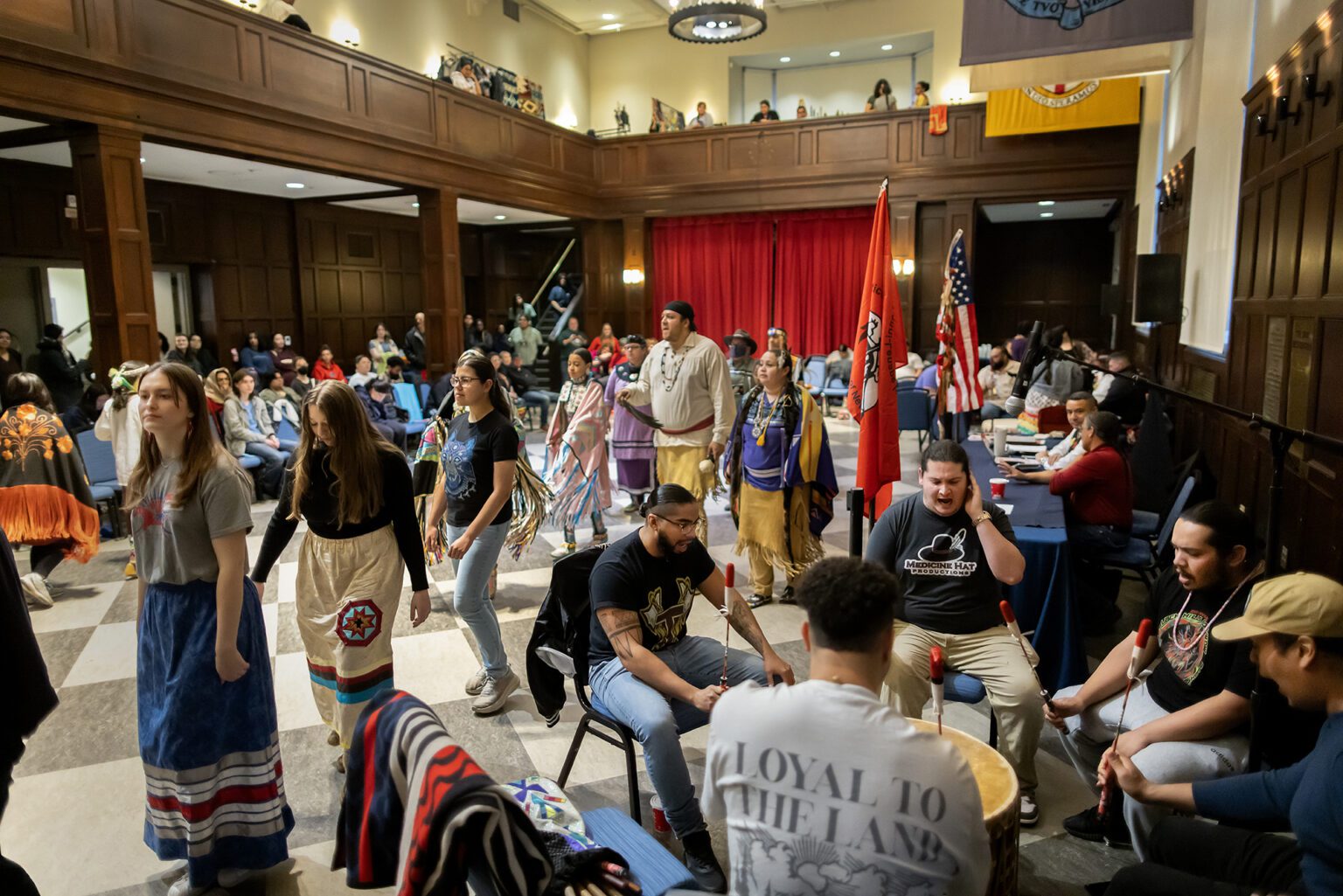
For Ryly Ziese, a third-year at the Wharton School from Cookson, Oklahoma, this is important. Ziese, who is Cherokee Nation, is on the Natives at Penn board as treasurer and helped to organize the Powwow. “Yes, we are Natives at Penn,” she says, “but it’s important to ask the people whose land we are on.”
Through her involvement, Ziese was able to meet people from different tribes. “Coming to Penn, I had very set mind of what a Native person was, just because I grew up around the same type of people,” she says.
“It’s been very eye-opening,” Ziese says. “I’ve enjoyed learning about all the different cultures that either blend with mine, or maybe sometimes contradict what we believe.”
“Our goal is really to support Native, Indigenous, and First Nations students,” De Cruz says. “We center students in exploring what it is they want to do on campus, in terms of building their leadership, raising awareness, and increasing understanding of Native traditions.”
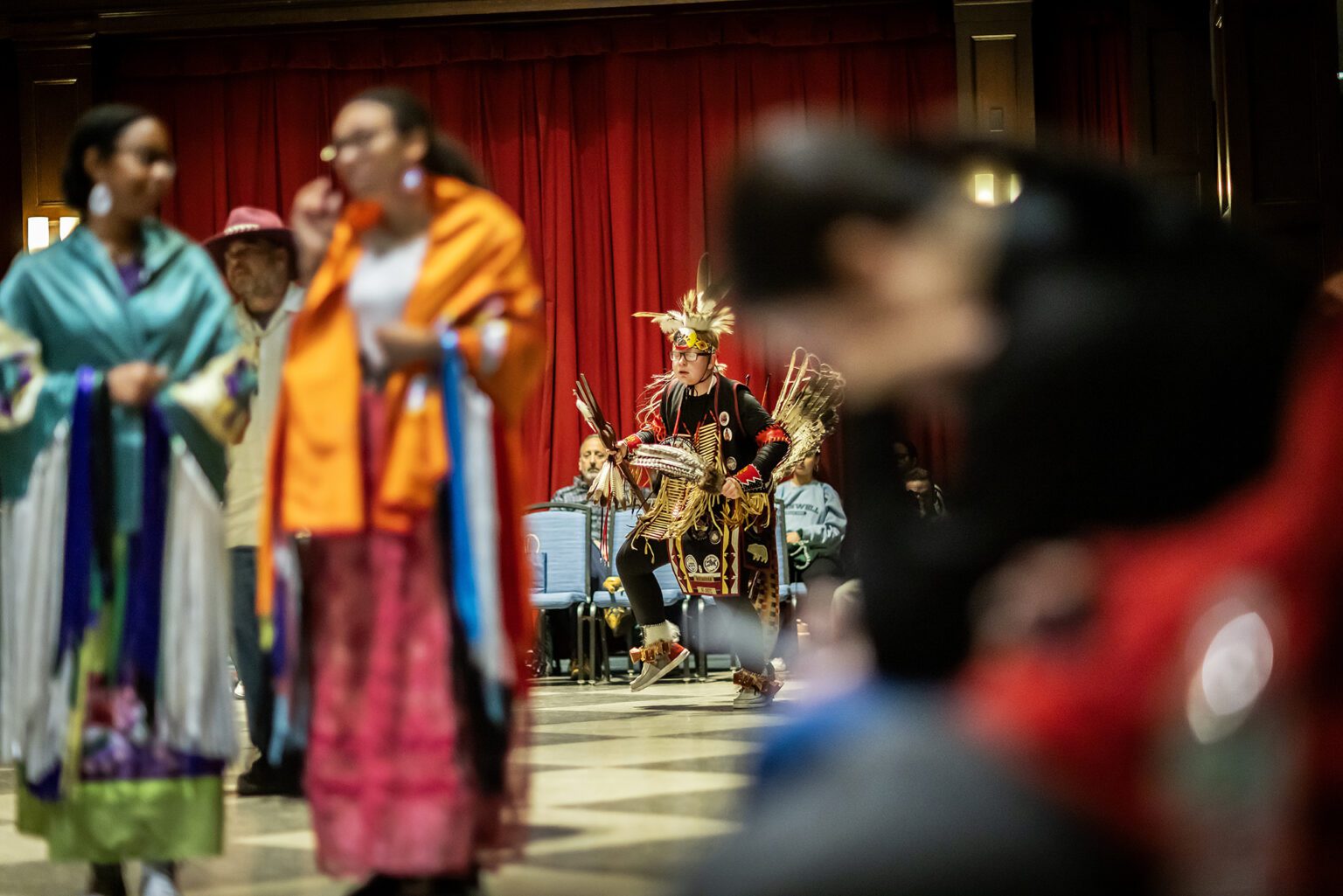
According to Natives at Penn, more than 20 tribes, nations, and peoples are represented by Penn faculty, students, and staff. Now a registered nurse in Mashpee, Peters says that Natives at Penn helped her adjust to University life.
Wearing a fringed buckskin skirt and carrying a blanket, Peters led the first women’s intertribal dance. The women traveled clockwise in a circle, following the path of the sun.
Traditionally, both feet remain on the ground during powwow dancing, said the event’s emcee, Keith Colston of the Tuscarora and Lumbee tribes. Dancers took small steps forward, moving forward with the balls of their feet with heels elevated and knees bent, following the beat of the drum.
With more than 100 people in attendance from Penn and beyond, Colson guided the audience through the Powwow, offering education and protocols. Certain dances and ceremonies are for specific groups only, he said. In the women’s fancy exhibition, twirling dancers in long, fringed shawls made 360° turns in place; in the jingle dance, a newer dance from the early 20th century, women wore bugle-shaped ornaments, tobacco tin lids rolled into cones and sewn to their skirts, which clinked as the dancers moved. The men’s traditional dance is for warriors, Colson said. These dancers wear regalia made from birds of prey and cowbells tied around the ankles.
Penn LGBT Center’s Scholars-in-Residence Program returns, welcomes three local voices
The University of Pennsylvania’s Penn LGBT Center’s Scholars-in-Residence Program is returning for 2024 and will welcome three new LGBTQ+ scholars with diverse backgrounds, all from the Philadelphia area. This year’s program includes a TedTalk by each of the scholars, which will take place during the University of Pennsylvania’s QPenn week March 22-29. This year’s scholars include a cohort of three local activists and entrepreneurs: TS Hawkins, Kyle Cuffie-Scott and Dr. Danna Bodenheimer.
The program is a first-of-its kind initiative that amplifies queer and trans voices, integrating scholars from varying lines of work into Penn’s classrooms. One of the main objectives of this program is to increase students’ awareness of the LGBTQ+ community and encourage social change.
In the summer of 2022, the Penn LGBT Center received an anonymous endowment of $2 million meant to advance LGBTQ+ scholarship and awareness of the queer and trans community. The Center used this money to launch the Scholars-in-Residence program in 2023. In that first year, the Penn LGBT Center hosted ALOK, a renowned gender-nonconforming author, comedian and public speaker. This year, the focus will be on scholars from the Philadelphia area to connect students with LGBTQ+ professionals who represent the local community.
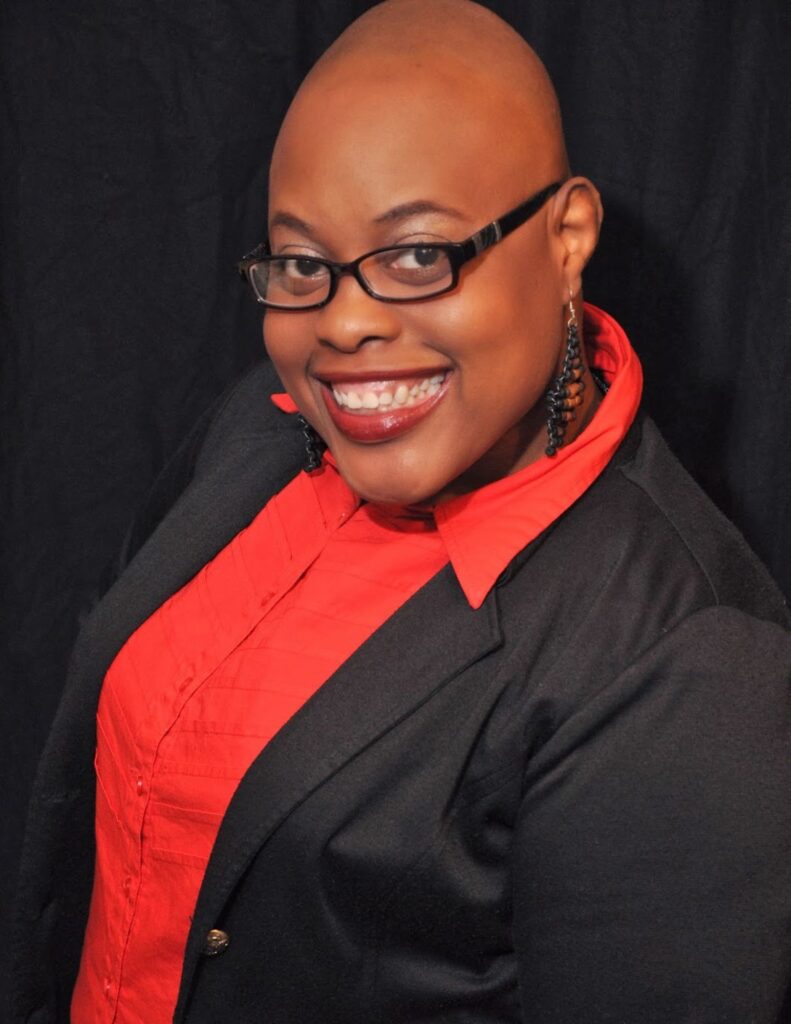
TS Hawkins
Hawkins is an international, award-winning poet, performance artist, playwright and trauma-informed educator. They have been recognized by the Barrymore Awards; featured in publications such as WHYY, NPR and the Chicago Tribune; and are a recipient of both the Victory Foundation Theatre Education Award and a Best of Philly Award. Their written works include “Seeking Silence,” “sweet bread peaches” (formerly ”Cartons of Ultrasounds”), “Too Late to Apologize,” “In Their Silence” (formerly “They’ll Neglect to Tell You”) and others.
“What I love and what I’m intrigued by [about the Scholars-in-Residence program] is, yes, they gave us parameters, but the process is very collaborative and very open,” Hawkins said.
“They want you at the table doing what you do, and a lot of times in a residency, they want your work, but they still want you to follow a specific framework to get that process and product done,” they added. “This has been a very different and engaging experience, which is exciting.”
Hawkins also spoke to the importance of poetry and education, which they will be applying to their TedTalk, “Purpose, Poetry, and Power: Tools for Thriving in a Shifting Society.” The talk will address how one finds peace in the present climate, particularly in the context of social media. Hawkins will also be turning their talk into a master class in the program.
Hawkins also shared their philosophy, explaining, “If you have access to language and are able to paint the world with your words, that’s poetry.”
Kyle Cuffie-Scott
Cuffie-Scott has appeared on “Good Morning America” and has made birthday cakes for celebrities such as Janet Jackson. As the founder and co-owner of Darnel’s Cakes LLC — which will be celebrating its fourth year at its Old City location in May — Cuffie-Scott explained that he began the bakery to honor his cousin Darnel, who passed away due to AIDS complications. Although the business began as a fundraiser to spread awareness, it blossomed into a full brick-and-mortar shop, which has continued Cuffie-Scott’s activist work.
Cuffie-Scott’s business raises awareness about the HIV/AIDS epidemic and contributes to activism and advocacy by collaborating with national and local organizations that work to combat both the virus itself and the pervasive stigmas around those with the disease.
Of his activism, Cuffie-Scott explained tha Darnel’s Cakes focuses on, “spreading the word about getting tested, finding ways to get tests in people’s hands so it’s not so taboo or scary, and helping to de-stigmatize HIV and AIDS a little bit more.”
Cuffie-Scott explained that he is most excited about the opportunity “to help change some young lives and get them on the right track of getting tested early, letting their friends know and staying on top of their sexual health.”
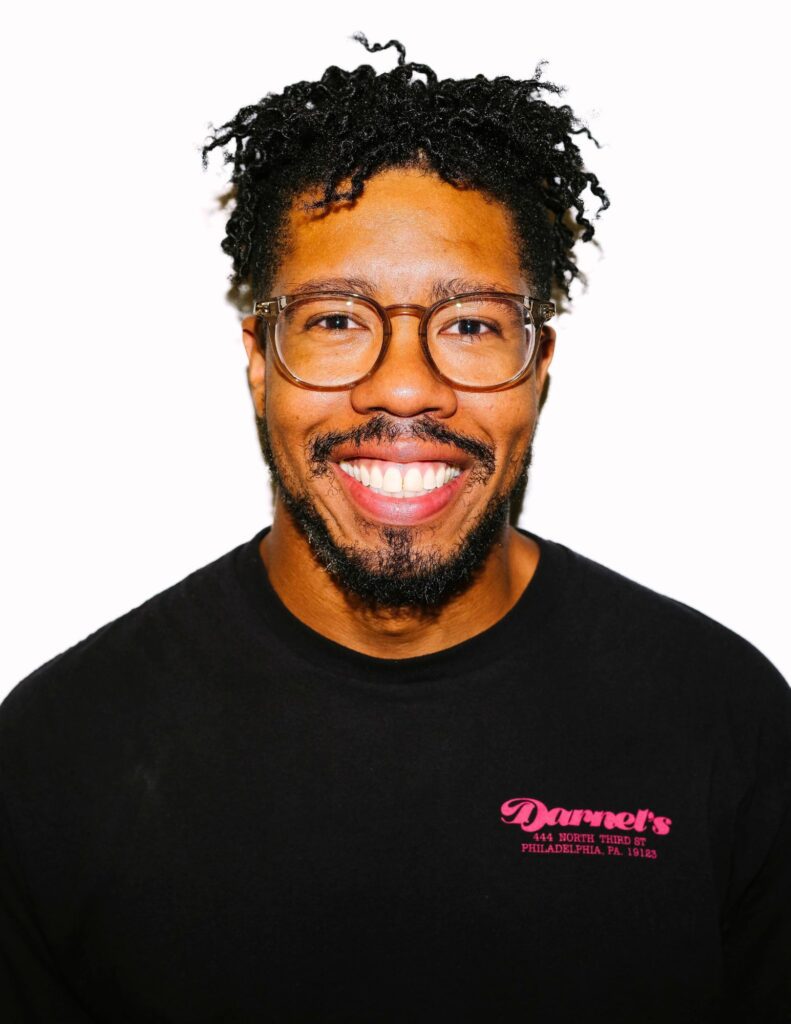
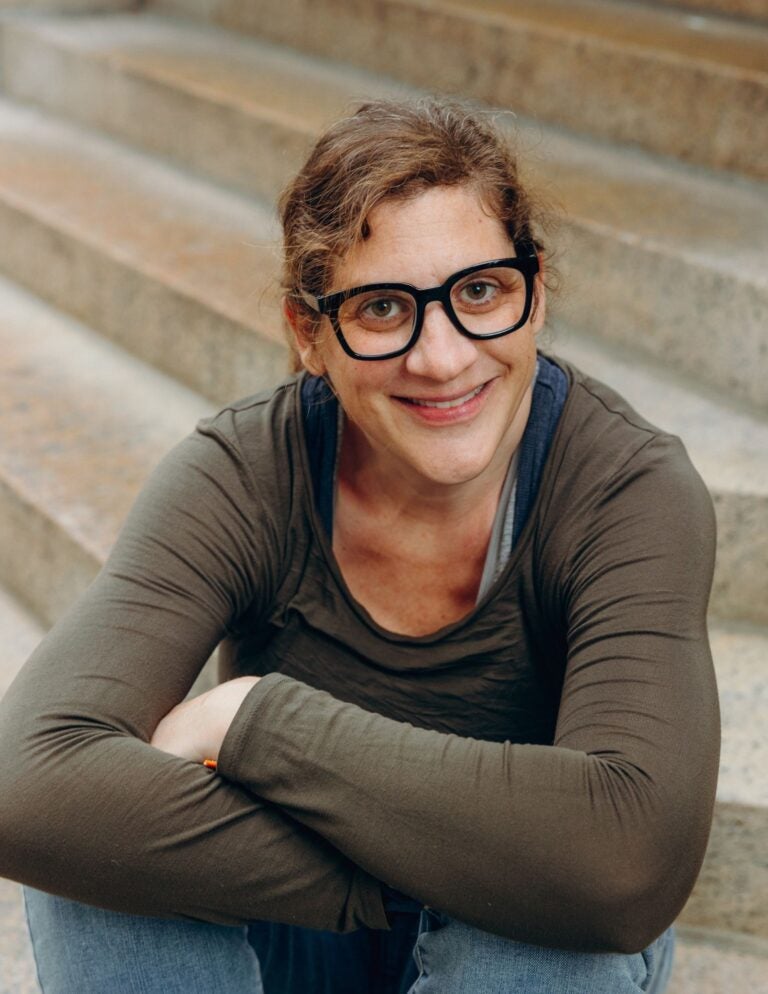
Dr. Danna Bodenheimer
Bodenheimer, who could not be reached for comment, is the founder and director of Walnut Psychotherapy Center, a prominent therapy practice in Philadelphia serving the LGBTQ+ community. Bodenheimer also has more than 15 years of experience in the mental health field, with a particular focus on providing therapeutic care to those in the LGBTQ+ community. For the Scholars-in-Residence program, she will bring the perspective of an experienced instructor and published author who is particularly interested in the effects of dual marginalization.
Responding to community needs
Jake Muscato, one of the Penn LGBT Center’s associate directors, explained that the transition to Philadelphia-based scholars this year was because the Center wanted to give local activists and educators a platform and because of the scholars’ significant contributions to the community. Muscato elaborated that connecting to the community is an essential tenet of the LGBT Center’s goals.
Muscato also shared that another of the Scholars-in-Residence program’s main goals is to “change hearts and minds, which is the goal of advocacy and scholarship.”
“It’s often community activists who have told the story of queer and trans communities, so this is the natural connection between this sort of work,” said Eric Anglero, the director of Penn’s LGBT Center.
Anglero also highlighted that the work of the three scholars in the 2024 program is integral to the current story of the LGBTQ+ community in Philadelphia and the ways that academic spaces talk about gender and sexuality.
In addition to connecting and empowering queer and trans students, the program is a learning opportunity for students who may not otherwise encounter these topics, organizations or conversations. Anglero also explained that the aim of the program is to truly foster learning, including those working within the Penn LGBT Center. In fact, many facets of the program are driven by the students themselves, as the Center actively seeks their input on what they want out of the program.
“My hope, my dream is that we are responsive to the community needs and that we are really open to listening, as I think the Center really has done since its foundation,” Anglero said.
“As we face this litany of legislation happening nationally, I think this is one of the ways to highlight how advocacy can happen even in the face of some really terrible legislative maps,” Anglero added.
Archiving materials that reflect a ‘shared history’
In 1969, a group of women met to talk about women: their bodies, their sexual health, their reproductive rights, and their experiences with doctors and medicine. A year later, these women put together a 193-page course booklet and in 1971, retitled it “Our Bodies, Ourselves.” Now a cult classic, the book has sold more than 4 million copies, been translated into 34 languages, and been banned from high schools and public libraries.
“Our Bodies, Ourselves” is now out of print. But an old, yellowed copy, dated 1971, stapled at the corner, and priced for 75 cents, for years existed in a box in Fisher-Bennet Hall. This spring, it will move to the Kislak Center for Special Collections, Rare Books, and Manuscripts, as part of the formal archiving of all the historical materials from the Program in Gender Studies and Women’s Studies (GSWS) and the Penn Women’s Center, both of which are celebrating their 50th anniversary this year.
Gwendolyn Beetham, associate director of GSWS, says that in the run-up to the 50th anniversary, she and Elisa Foster, director of the Penn Women’s Center, realized that none of their documents were housed as accessible archival material. “We wanted to get them out of boxes in people’s offices or basements,” Beetham says.
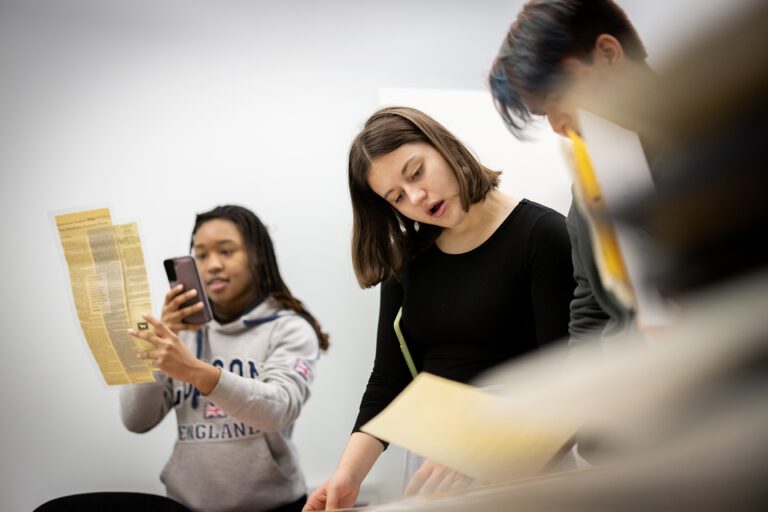
Alicia Meyer, curator of research services at the Kislak Center, says she’s had researchers come in looking to see and ask to see “this OG copy of ‘Our Bodies, Ourselves.’”
“People will ask me, ‘Do you have it? Do you have it?’ And I’m like, ‘Well, I know where one is …’” Meyer says. Archiving the materials will make them more accessible for researchers, she says, who can view the library documents in the sixth floor reading room at Van Pelt-Dietrich Library. Any materials specifically relating to Penn will be located in University Archives, and all will be available to the public.
The material is saved in context, with newspaper clippings pointing to larger national issues, says Meyer. “It’s great when you can connect those other sources to the history of Penn, because I think it really affects students and helps them see their own role in the history of the institution.”
“I’m a feminist, and it was really helpful to have professors who helped me study feminism,” says Marielle Cohen, who graduated in 1991 from the College of Arts & Sciences with a degree in sociology and in 1992 with a master’s in social work from what is now the School of Social Policy & Practice.
While at Penn, Cohen advocated against sexual assault and attended “Take Back the Night” rallies. In her second year as an undergraduate, Cohen began volunteering as a rape crisis counselor for the Philadelphia Center Against Sexual Violence, eventually serving in the emergency room at Jefferson Hospital.
“Issues of equality affect all of us, all of our lives,” she says.
Using the materials in the classroom
The archival material also includes documentation of the histories of Special Services and Penn Violence Prevention, Foster says. Penn Violence Prevention grew out of the Women’s Center, which continues to serve as a safe space and offers education to students and employees about preventing interpersonal violence.
“We have this shared history,” Foster says of GSWS and the Women’s Center. “The same people who were pushing for the Women’s Studies program were pushing for a women’s center and advocating for the safety of women on campus in their everyday lives.”
This semester, the Center also served as a classroom, where Beetham’s course Trauma Porn to Title IX: 50 Years of Anti-Violence Activism at Penn met to go over the archival material before it moves into the University Archives and the library system. Students have pored over program flyers, course materials, and handouts about interpersonal violence, sexuality, and resilience. There are saturated photographs of Anita Hill during her 1992 visit to Penn, a proclamation from City of Philadelphia declaring “Penn Women’s Center Day,” and a poster advertising a lecture on eating disorders. “Not Just a White Girl’s Thing,” it reads.
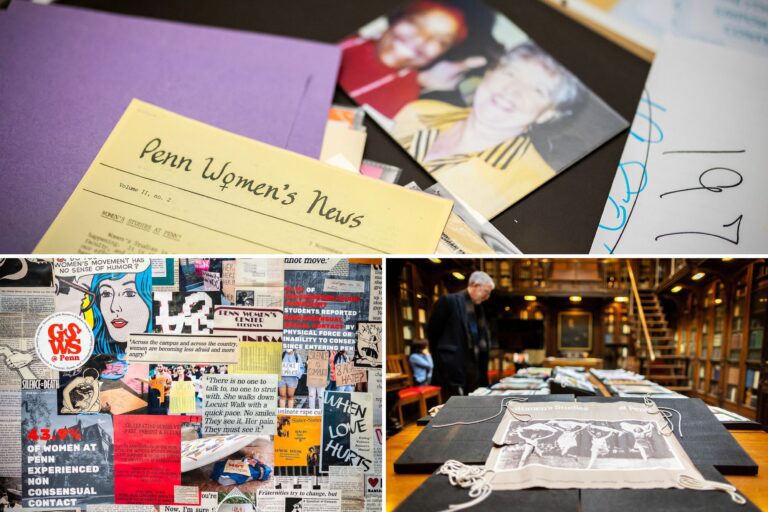
The students have been particularly drawn to material from the 1990s, a decade whose music, fashion, and iconography resonate with Gen Z. Plus, the ’90s mark the transition from black and white to color, with photographs and posters becoming more commonplace.
Chiara Bruzzi, a third year from Miami majoring in materials science and engineering, found a flyer from the ’90s that read, “If we don’t have abortion, what will we do?” Next to those words was an image of a coat hanger, a once-common reminder of the history of reproductive rights.
